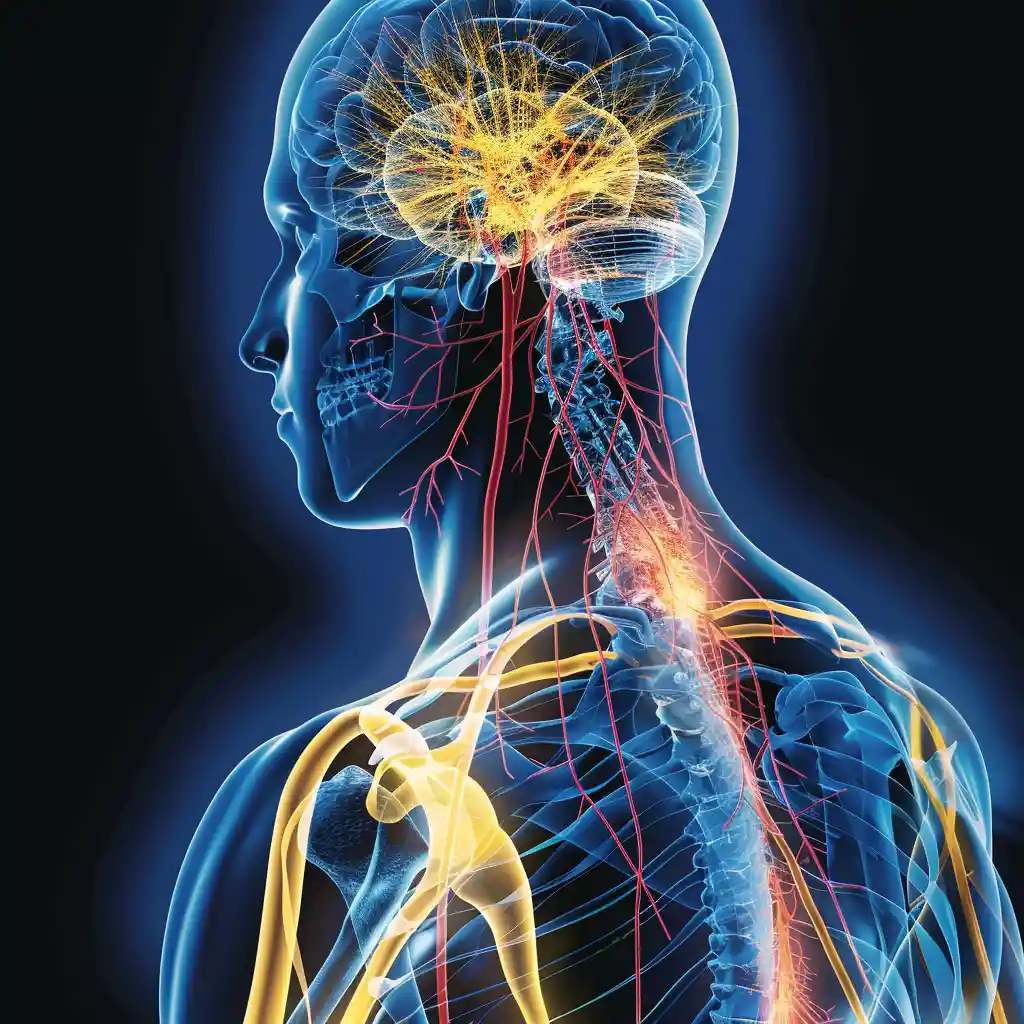More than just back adjustments, modern chiropractors are licensed healthcare professionals who use a scientific, whole-body approach—including diagnostics, manual therapies, and rehabilitative exercises—to treat the root cause of musculoskeletal pain and improve overall function. They are primary care providers for the spine and nervous system, offering a non-surgical, drug-free path to pain relief and enhanced well-being.
Beyond the 'Crack': The Modern Chiropractor's Role in Healthcare
For many, the word "chiropractor" conjures a single image: a practitioner delivering a swift twist that results in a loud, cracking sound. While this maneuver, known as a spinal adjustment, is a cornerstone of the profession, it represents only a fraction of what a modern Doctor of Chiropractic (DC) actually does. The field has evolved significantly, moving far beyond a singular technique to become an integrated and respected branch of musculoskeletal healthcare.
Today's chiropractor is a diagnostician, a therapist, and a wellness coach rolled into one. They operate on the principle that the body is a self-healing, interconnected system. Proper structure, particularly of the spine, is essential for proper function of the nervous system, which controls every cell and organ in your body. When pain or dysfunction arises, it's often a sign of an underlying mechanical or neurological issue. The chiropractor's job is to find and correct that root cause, not just to silence the symptom.
This patient-centered, evidence-based approach is gaining significant traction. In fact, the number of Americans seeking chiropractic services is on a steady rise. In 2022, 11.0 percent of U.S. adults received chiropractic care, a notable increase from 7.4 percent in 2002 according to the National Center for Complementary and Integrative Health (NCCIH). The primary driver for these visits is clear: pain. The same data shows that an overwhelming majority of adults, 85.7 percent, used chiropractic care specifically for pain management reports the NCCIH. This highlights the profession's crucial role in addressing one of the most common and debilitating health issues people face today.
Is a Doctor of Chiropractic a 'Real' Doctor? Unpacking the Credentials
One of the most persistent questions surrounding the profession is about the legitimacy of its practitioners' titles. Is a Doctor of Chiropractic (DC) a "real" doctor? The answer is an unequivocal yes, though with an important distinction. Chiropractors are not medical doctors (MDs) or doctors of osteopathy (DOs). Their scope of practice does not include prescribing pharmaceutical drugs or performing major surgery. However, they are recognized as doctoral-level healthcare providers by the U.S. government and all 50 states.
The path to becoming a licensed chiropractor is rigorous and demanding, on par with other medical professions. Chiropractors are licensed practitioners who must earn a Doctor of Chiropractic (DC) degree, which typically takes four years to complete after a minimum of three years of undergraduate education, with most students entering the program with a bachelor's degree as outlined by the NCCIH. This postgraduate program is administered by accredited chiropractic colleges and involves a comprehensive curriculum.

A Glimpse into the Chiropractic Curriculum
The education of a DC is heavily focused on the sciences, with a particular emphasis on the neuromusculoskeletal system. Coursework includes:
- Anatomy and Physiology
- Neurology
- Orthopedics
- Biochemistry
- Pathology
- Microbiology
- Differential Diagnosis
- Diagnostic Imaging (X-ray and MRI interpretation)
- Rehabilitation
- Nutrition
- Clinical Internships
To put this into perspective, let's compare the basic science educational requirements between chiropractic (DC) and medical (MD) school programs. While both are extensive, the focus differs, yet the foundational knowledge is strikingly similar.
Note: Hours are approximate and can vary by institution. The table illustrates the significant classroom investment in core medical sciences required for both professions.
After completing their doctoral program, graduates must pass a series of rigorous national board examinations administered by the National Board of Chiropractic Examiners (NBCE). Finally, they must obtain a license in the state where they wish to practice, which often involves an additional state-specific jurisprudence exam. This entire process ensures that a licensed Doctor of Chiropractic is a highly trained and competent healthcare professional, fully qualified to diagnose and treat conditions within their scope of practice.
The Philosophy of Healing: A Whole-Body, Patient-Centered Approach
At its heart, chiropractic care is guided by a distinct philosophy that sets it apart from many conventional medical approaches. This philosophy is not mystical but is grounded in the biological and physiological realities of the human body. The central tenet is that the body possesses an innate ability to heal itself. The role of the chiropractor is to remove interferences that hinder this natural process.
The chiropractic approach is fundamentally holistic, focusing on the intricate relationship between the nervous system's function within the spinal column and the body's overall ability to heal itself naturally according to academic insights from the University of Bridgeport. The nervous system, composed of the brain, spinal cord, and a vast network of nerves, is the body's master control system. It coordinates every function, from the unconscious rhythm of your heartbeat to the conscious decision to take a step. The spinal column, made up of 24 movable vertebrae, serves as the primary armor for the delicate spinal cord.
When vertebrae lose their normal position or motion due to stress, trauma, or poor posture, it can lead to what chiropractors call a "vertebral subluxation" or, in more modern, evidence-based terms, a "joint dysfunction" or "segmental restriction." This dysfunction can irritate or interfere with the nerves that exit the spinal cord at that level. The result isn't just localized pain; it can manifest as a wide array of symptoms and health problems because the communication between the brain and that part of the body is compromised. A modern chiropractor's goal is to identify these areas of dysfunction and use precise interventions to restore proper mechanics, thereby alleviating nerve interference and allowing the body to function optimally.
Your First Visit: A Comprehensive Path to Diagnosis and Treatment
Walking into a chiropractor's office for the first time can be intimidating if you don't know what to expect. A reputable, patient-focused practice will prioritize making you feel comfortable and informed. The initial visit is not about a quick "crack and go"; it's a thorough, investigative process designed to uncover the root of your problem.
Step 1: Initial Consultation & Detailed Health History
Your journey begins not on a treatment table, but in a consultation room. You'll have an in-depth conversation with the doctor about your health. This is a critical step. You'll discuss:
- Your primary complaint: Where is the pain? What does it feel like (sharp, dull, aching, burning)? When did it start? What makes it better or worse?
- Your health history: This includes past injuries, surgeries, chronic illnesses, and any previous treatments you've received.
- Your lifestyle: The doctor will ask about your job, exercise habits, diet, stress levels, and sleep patterns. These factors provide crucial context for your condition.
- Your goals: What do you want to achieve with care? Is it simply to get out of pain, or is it to return to a sport, play with your grandchildren, or improve your overall quality of life?
Step 2: The Comprehensive Physical Examination
Following the consultation, the doctor will perform a detailed physical exam. This is a hands-on process to assess your body's structure and function. It typically includes several components:
- Postural Analysis: Using visual inspection and sometimes digital tools, the chiropractor will assess your posture, looking for imbalances like a tilted head, uneven shoulders, or a rotated pelvis. -
- Gait Analysis:
- You may be asked to walk a short distance so the doctor can observe your movement patterns and identify any abnormalities in your stride that could be contributing to your problem. -
- Range of Motion Tests:
- The doctor will measure the flexibility and movement of the affected joints and your spine, noting any areas of restriction or pain. -
- Orthopedic Tests:
- These are specific, targeted movements and tests designed to recreate your pain. This helps the doctor pinpoint exactly which tissues (muscle, ligament, nerve, or joint) are involved. -
- Neurological Tests:
- The chiropractor will check your reflexes, muscle strength (myotomes), and sensation in different parts of your body (dermatomes) to assess the health and function of your nervous system. -
- Palpation:
- This is the process of using the hands to feel (palpate) your spine and surrounding muscles. The doctor can identify areas of muscle tightness, inflammation, swelling, and joints that are not moving correctly.

Step 3: Diagnostic Imaging (If Necessary)
Based on the findings from your history and examination, the chiropractor may determine that diagnostic imaging is needed to get a clearer picture of your condition. This is not a routine step for every patient. X-rays are typically ordered to rule out more serious pathology like fractures or tumors, or to assess for spinal degeneration (arthritis) or significant structural abnormalities. In some cases, an MRI or CT scan may be recommended to visualize soft tissues like discs, nerves, and ligaments in greater detail.
Step 4: Diagnosis and Report of Findings
Once all the information has been gathered, the chiropractor will synthesize it to arrive at a specific diagnosis. This is the "what" and "why" of your problem. You will then have a "Report of Findings" meeting. During this report, the doctor will explain:
- Your exact diagnosis, explained in clear, understandable terms.
- The underlying cause of your condition.
- A personalized treatment plan tailored to your specific needs and goals.
- The types of therapies that will be used.
- The proposed frequency and duration of your care.
- The expected outcomes and timeline for improvement.
This is a collaborative process. You are encouraged to ask questions and become an active participant in your recovery. A good chiropractor ensures you understand your condition and the plan to fix it before any treatment begins.
The Chiropractor's Toolbox: An Array of Techniques for Pain Relief
The modern chiropractor has a diverse and sophisticated set of tools at their disposal. The treatment plan is rarely one-size-fits-all. Instead, it's a multi-faceted strategy that combines different therapies to address the patient's unique condition from multiple angles—reducing pain, restoring function, and strengthening the body to prevent recurrence.
The Chiropractic Adjustment: What Actually Happens?
Let's demystify the core therapeutic procedure of chiropractic care. The spinal adjustment, or spinal manipulation, is a highly skilled and precise procedure. The chiropractor applies a controlled, specific force to a joint that is "stuck" or not moving properly.
The Goal: The primary goal is not to "put bones back in place." The goal is to restore normal motion and alignment to the joint. This has several immediate and profound physiological effects:
- Stimulates Mechanoreceptors: The quick stretch applied to the joint capsule stimulates specialized nerve endings called mechanoreceptors. These nerves send a flood of information about movement to the brain, which can override and inhibit pain signals from the same area.
- Relaxes Muscles: This same neurological input helps to relax tight, spastic muscles surrounding the joint, breaking the pain-spasm-pain cycle.
- Improves Mobility: By restoring movement to the joint, the adjustment improves overall flexibility and function of the spinal segment.
What is that "popping" sound? The audible "pop" or "crack" that often accompanies an adjustment is called cavitation. It is simply the release of a gas bubble (mostly nitrogen) from the synovial fluid within the joint capsule. When the joint is stretched, the pressure inside drops, allowing the dissolved gas to form a bubble, creating the sound. It is the same phenomenon that occurs when you crack your knuckles. It is not bones cracking, grinding, or breaking. Some techniques produce no sound at all, yet are equally effective.
There are many different adjustment styles, and a skilled chiropractor will choose the one best suited for the patient's body and condition:
- Diversified Technique: The most common technique, involving a specific, high-velocity, low-amplitude thrust delivered by hand.
- Activator Method: A gentle, instrument-assisted technique that uses a small, handheld device to deliver a precise, low-force impulse to the joint. It's ideal for older patients, children, or those with acute pain.
- Thompson Drop-Table Technique: This method uses a specialized table with sections that drop away a short distance when the thrust is applied. This allows for a lighter adjustment, using the patient's own body weight to assist.
- Flexion-Distraction: A gentle, non-thrusting technique performed on a motorized table that slowly stretches the lower back. It is highly effective for treating disc herniations, sciatica, and stenosis.
Beyond Adjustments: Advanced and Complementary Therapies
A comprehensive treatment plan extends far beyond the adjustment. Modern chiropractors integrate a variety of advanced therapies to accelerate healing, address soft tissue injuries, and empower patients with long-term solutions.
Shockwave Therapy (ESWT): This cutting-edge technology uses high-energy acoustic waves to target damaged tissue deep within the body. It works by stimulating metabolism, enhancing blood circulation, and breaking down scar tissue and calcification. This jump-starts the body's natural healing process and is highly effective for chronic tendon and soft tissue injuries. Patients have found remarkable success with this treatment. One individual, recovering from a vehicle accident, shared, "I was in a car collision and had nonstop knee and leg pain. Shockwave therapy has helped more than anything else..." Another patient suffering from a common sports injury noted, "Shockwave treatment has helped my shoulder pain tremendously! It has allowed to start playing golf again..."
Soft Tissue Therapies: Pain often originates in the muscles, ligaments, and fascia. Chiropractors use various hands-on and instrument-assisted techniques to address these tissues directly:
- Myofascial Release: A manual therapy that applies sustained pressure to tight, restricted fascia (the connective tissue that surrounds muscles) to release tension and restore mobility.
- Instrument-Assisted Soft Tissue Mobilization (IASTM): Using specially designed stainless steel tools to detect and break up fibrotic scar tissue, adhesions, and fascial restrictions.
- Trigger Point Therapy: Applying direct pressure to specific "knots" or hyperirritable spots in muscles to release tension and alleviate referred pain.
Rehabilitative Exercises: Getting out of pain is only the first step. Keeping the pain away requires addressing the underlying weakness or imbalance that caused the problem. Chiropractors are experts in functional movement and prescribe specific corrective exercises to:
- Strengthen weak or inhibited core muscles.
- Stretch chronically tight and overactive muscles.
- Improve posture and body mechanics.
- Enhance balance and proprioception (your body's awareness in space).
Spinal Decompression Therapy: For conditions like herniated discs, bulging discs, and sciatica, non-surgical spinal decompression can provide immense relief. The patient lies on a computer-controlled table that gently and slowly tractions or stretches the spine. This creates negative pressure within the disc, which can help retract the bulging material and draw in healing nutrients.
Lifestyle and Nutritional Counseling: True wellness involves more than just office treatments. Chiropractors take a holistic view, often providing guidance on anti-inflammatory nutrition, stress management techniques, proper ergonomics for your workspace, and other lifestyle modifications that support healing and prevent future problems.
Examining the Evidence: Does Chiropractic Care Actually Work?
In a world of medical claims, discerning patients rightly ask for evidence. So, does chiropractic care work? The answer, supported by a growing body of scientific research and clinical guidelines, is a resounding yes, particularly for a number of common musculoskeletal conditions.
For decades, chiropractic care has been a go-to for low back pain, and high-quality research validates this choice. Major clinical practice guidelines from organizations like the American College of Physicians recommend spinal manipulation as a first-line, non-pharmacologic treatment for acute and chronic low back pain. The evidence is robust. A large 2019 systematic review published in the British Medical Journal, which analyzed 47 studies with a total of 9,211 participants, found that for chronic low-back pain, the short-term pain relief from spinal manipulation was similar to that produced by other recommended therapies like exercise or non-steroidal anti-inflammatory drug (NSAID) therapy as summarized by the NCCIH. This places chiropractic on equal footing with standard medical interventions, but with a significantly lower risk profile than medication.
The evidence extends beyond the lower back. Research supports the use of chiropractic care for:
- Neck Pain: Spinal manipulation and mobilization are effective for both acute and chronic neck pain.
- Headaches: Chiropractic care can be particularly effective for cervicogenic headaches (headaches originating from dysfunction in the neck) and can also help reduce the frequency and intensity of tension headaches and migraines.
- Sciatica: By addressing the underlying cause of nerve compression, such as a herniated disc or joint dysfunction, chiropractic techniques like flexion-distraction and adjustments can significantly relieve sciatic leg pain.
- Joint Pain: Care can also be beneficial for pain in other joints, including the shoulders, hips, and knees, by improving joint mechanics and addressing related soft tissue problems.
It's important to understand that, as with any medical treatment, results can vary. The effectiveness of care depends on the specific condition, the skill of the practitioner, and the patient's commitment to the treatment plan, including any prescribed exercises and lifestyle changes.
Bridging the Gap: Understanding the Historical Divide Between Medicine and Chiropractic
Given the educational rigor and growing body of evidence, some patients wonder, "Why do some doctors discourage chiropractors?" This is a valid question with a complex answer rooted in history, philosophy, and professional evolution.
The divide began in the early 20th century. The two professions developed along separate philosophical paths. Allopathic medicine (MDs) focused on treating disease and symptoms, often through pharmacology and surgery—an outside-in approach. Chiropractic, founded in 1895, focused on the concept of innate intelligence and removing interference (subluxation) to allow the body to heal from the inside-out. This philosophical chasm, combined with professional territorialism, led to decades of mistrust and outright hostility, with the American Medical Association (AMA) actively working to contain and eliminate the chiropractic profession for much of the 20th century.
Furthermore, like any profession, chiropractic has a spectrum of practice styles. Some practitioners adhere to older, more dogmatic models that may not align with modern scientific understanding, which can fuel skepticism from the medical community. However, the vast majority of today's chiropractors practice an evidence-based, integrative model. They are fluent in medical diagnosis, read MRIs, collaborate with other specialists, and base their treatment plans on the best available scientific evidence.
Fortunately, the old walls are crumbling. The shift in modern healthcare is towards patient-centered, interdisciplinary collaboration. A growing number of medical doctors, physical therapists, and surgeons now recognize the immense value of evidence-based chiropractic care, especially in the fight against the opioid epidemic. They see chiropractors as essential partners in providing non-pharmacologic, conservative care for musculoskeletal pain. It is now common for medical doctors to refer their patients to chiropractors for back pain, neck pain, and headaches, understanding that this approach can often yield excellent results and help patients avoid more invasive procedures.
Who Should See a Chiropractor? A Wide Range of Candidates
Because of its focus on the foundational structure and function of the body, chiropractic care can benefit a remarkably diverse group of people. You might be a good candidate for chiropractic care if you are:
- An office worker experiencing neck pain, headaches, or low back stiffness from long hours of sitting.
- A manual laborer or weekend warrior who has suffered a strain or sprain.
- An athlete looking to recover from an injury, prevent future issues, and optimize performance.
- An individual injured in a car accident, suffering from whiplash and associated symptoms.
- A senior seeking to manage arthritis pain, improve balance, and maintain mobility and independence.
- An expectant mother experiencing back pain and pelvic changes associated with pregnancy.
- Anyone with chronic pain in their back, neck, or joints who is seeking a safe, effective, drug-free alternative to medication or surgery.
- A health-conscious person who simply wants to improve their posture, move better, and enhance their overall wellness.
Your Partner in Health and Wellness
So, what does a chiropractor do exactly? They do far more than adjust the spine. A modern Doctor of Chiropractic is a highly educated, licensed healthcare professional who serves as a primary portal of entry for neuromusculoskeletal health. They conduct thorough examinations, provide accurate diagnoses, and deliver a sophisticated combination of hands-on therapies, advanced technological treatments, and rehabilitative strategies. They are partners in your health, dedicated to uncovering the root cause of your pain, restoring your body’s natural function, and empowering you to live a fuller, more active life.
At Pure Relief Pain Solutions Chiropractic in Austin, TX, we embody this modern, patient-focused approach. Our team is committed to providing the highest standard of evidence-based care, integrating advanced therapies like Shockwave and Spinal Decompression with expert chiropractic adjustments and personalized rehabilitation. If you are struggling with pain and seeking a non-surgical solution that addresses the cause, not just the symptoms, we invite you to contact our office. Let us be your partner in reclaiming your health and achieving lasting relief.
[updated 10-6-25]
Call us today or use our contact form to request an appointment and start getting relief.


.png)


